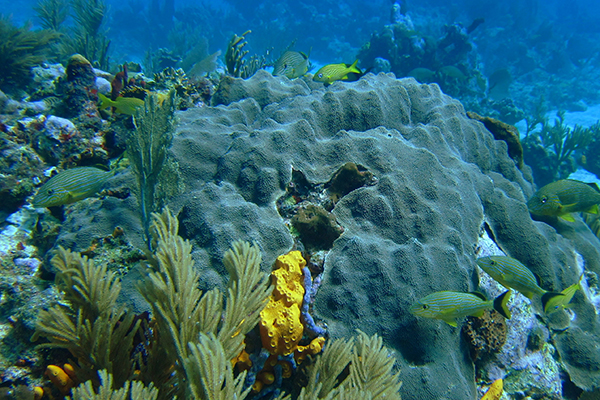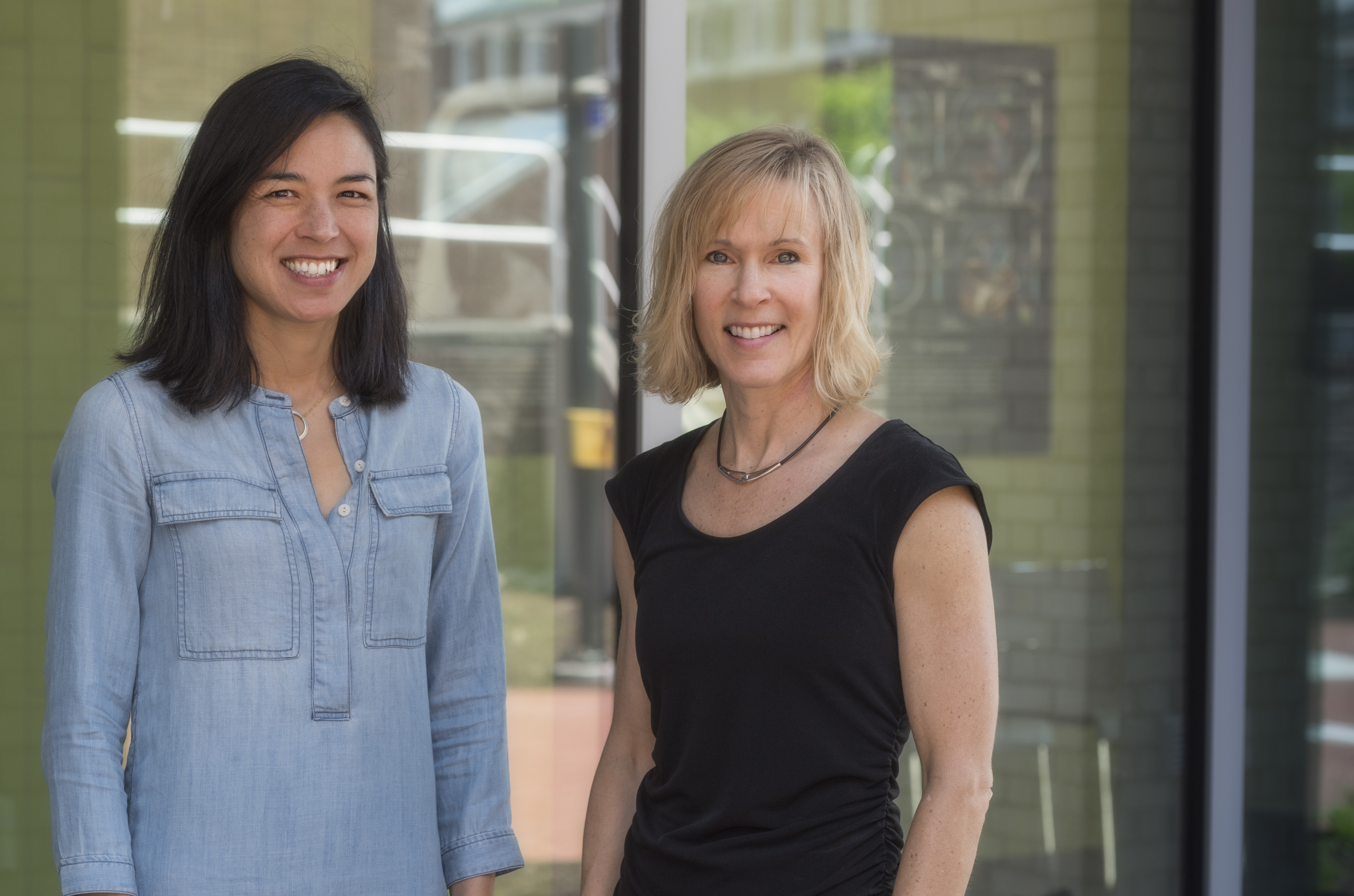


Fat makes coral fit
Study shows how some coral can survive annual bleaching events
9:37 a.m., Nov. 18, 2015--A year ago, researchers from University of Delaware and Ohio State University discovered that fat helps coral survive heat stress over the short term — and now it seems that fat helps coral survive over the long term, too.
The study offers important clues as to which coral species are most likely to withstand repeated bouts of heat stress, called “bleaching,” as climate change warms ocean waters worldwide.
Research Stories
Chronic wounds
Prof. Heck's legacy
In the Nov. 18 issue of the Proceedings of the Royal Society B: Biological Sciences, the research team, which includes UD marine science professor Mark Warner, reports that the same fat-storing coral species that showed the most resilience in a 2014 bleaching study has recovered more fully in the year since, compared to other species that stored less fat.
Warner, an algal physiologist and professor in UD’s College of Earth, Ocean, and Environment (CEOE), explained that corals are animals that live in symbiosis with algae, and when stressed, they flush the algae from their cells and take on a pale, or “bleached,” appearance. Bleached coral are more susceptible to storm damage and disease.
Lead study author Verena Schoepf, a former doctoral student in the School of Earth Sciences at Ohio State University and now a research associate at the University of Western Australia, said that tropical corals are extremely sensitive to heat stress.
“Three global bleaching events have already occurred since the 1980s, and will likely occur annually starting later this century,” she said. “Therefore, it has become more urgent than ever to know how coral can survive annual bleaching — one of the major threats to coral reefs today.”
Andréa Grottoli, professor in the School of Earth Sciences at Ohio State and principal investigator of the study, said that repeated bleaching will ultimately lead to less diversity in coral reefs, where all the different sizes and shapes of coral provide specialized habitats for fish and other creatures.
“Bleaching will significantly change the future of coral reefs, with heat-sensitive coral unable to recover,” Grottoli said. Interactions among coral hosts and their endosymbiontic algae, as well as predators and prey would then change in a domino effect.
“Already, bleaching events have resulted in significant amounts of coral dying and causing impact to ocean ecosystems, but up until now it was largely unknown whether coral could recover between annual bleaching events,” Schoepf added.
In fact, evidence that fat is a key component to coral survival has been building in recent years.
In 2014, the research team exposed three different coral species to two rounds of annual bleaching, then tested them six weeks later to see how well they had recovered. At that time, finger coral (Porites divaricata), the species that kept the largest fat reserves, had fared the best. Boulder coral (Orbicella faveolata), which kept less fat reserves, had recovered to a lesser extent. Mustard hill coral (Porites astreoides), which stored the least fat, had recovered the least.
Now, one year later, the researchers have revisited the corals and discovered that both the finger coral and boulder coral have recovered, while the mustard hill coral has not yet recovered, and likely never will if bleaching frequency remains high.
Surprisingly, all three species appear to be healthy at first glance. The symbiotic algae had returned to their cells, so the corals’ normal color had returned. But further analyses of the corals’ bodies tell a different story.
“They all look healthy on the outside, but they’re not all healthy on the inside,” Grottoli said.
Healthy corals get their day-to-day energy from sugar that the algae make through photosynthesis. For growth, healing and reproduction, they eat a diet that includes zooplankton. During bleaching, their nutritional state is thrown out of balance.
“When coral is bleached, it no longer gets enough food energy and so it starts slowing down in growth and loses its fat and other energy reserves – just like humans do during times of hardship,” Schoepf said.
When corals photosynthesis slows down during bleaching, they start consuming their own bodies, as human bodies do when severely malnourished. And while all the corals in the study were able to eat zooplankton, the ones who had more fat to burn had less healing to do after the repeat bleaching subsided, and were able to resume a normal status within a year.
The ones with less fat to burn sustained more damage, and so — even a year later — they are still in the process of healing.
The researchers believe their findings provide important knowledge about coral capacity to recover from annual bleaching, information critical to helping predict the persistence of coral reefs.
Coauthors on the study also included Grottoli’s former graduate students Stephen Levas, now of Villanova University, and Justin Baumann, now of the University of North Carolina at Chapel Hill; Ohio State research associate Yohei Matsui; and UD graduate student Matthew Aschaffenburg.
This research was funded by the National Science Foundation.
About UD’s College of Earth, Ocean, and Environment
UD’s College of Earth, Ocean, and Environment (CEOE) strives to reach a deeper understanding of the planet and improve stewardship of environmental resources. CEOE faculty and students examine complex information from multiple disciplines with the knowledge that science and society are firmly linked and solutions to environmental challenges can be synonymous with positive economic impact.
The college comprises the School of Marine Science and Policy, Department of Geography and Department of Geological Sciences.
CEOE brings the latest advances in technology to bear on both teaching and conducting ocean, earth and atmospheric research. Current focus areas are ecosystem health and society, environmental observing and forecasting, and renewable energy and sustainability.
Adapted with permission from Pam Frost Gorder, Ohio State University
Photographs courtesy of Ohio State University and by Verena Schoepf, University of Western Australia









